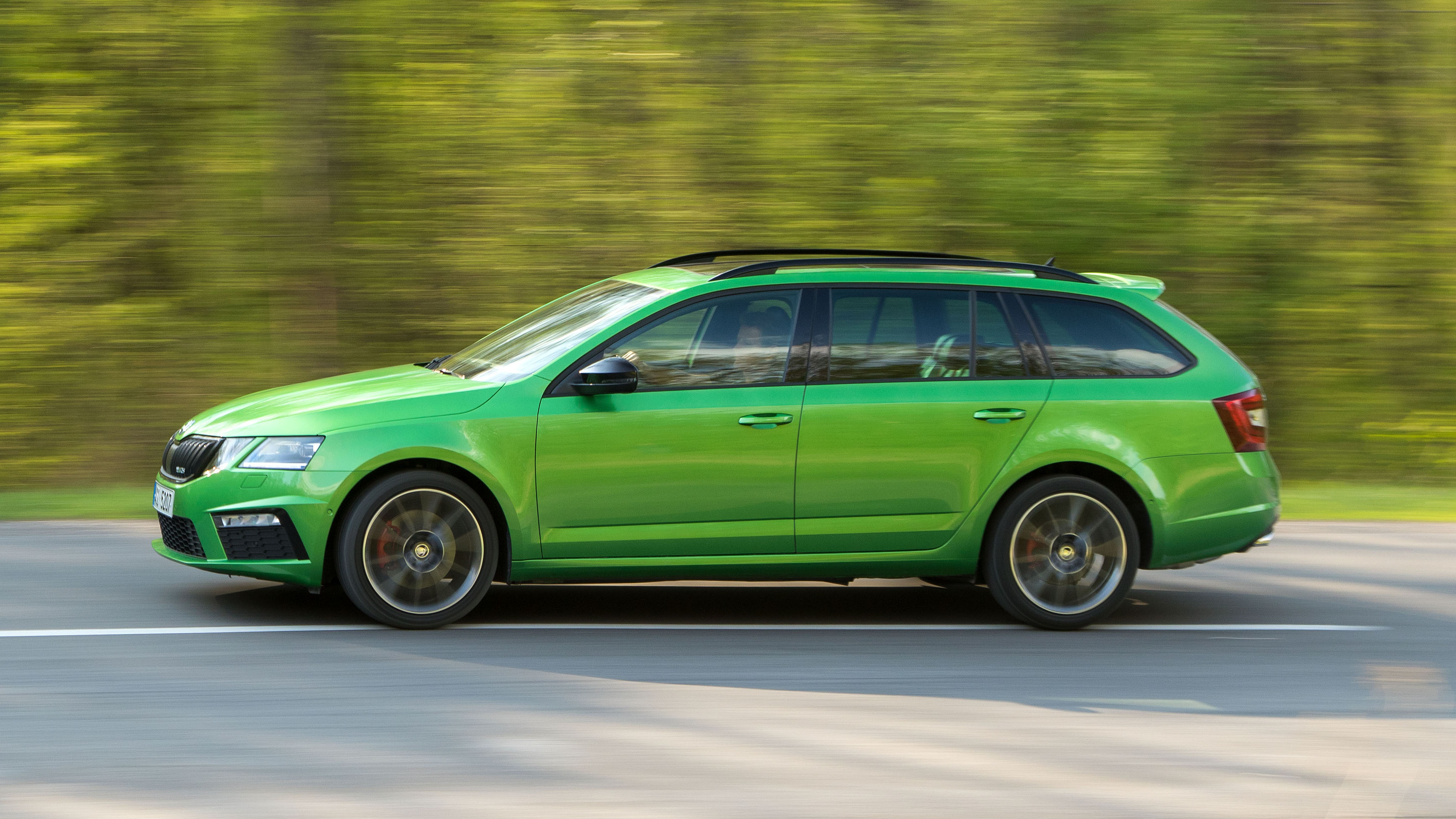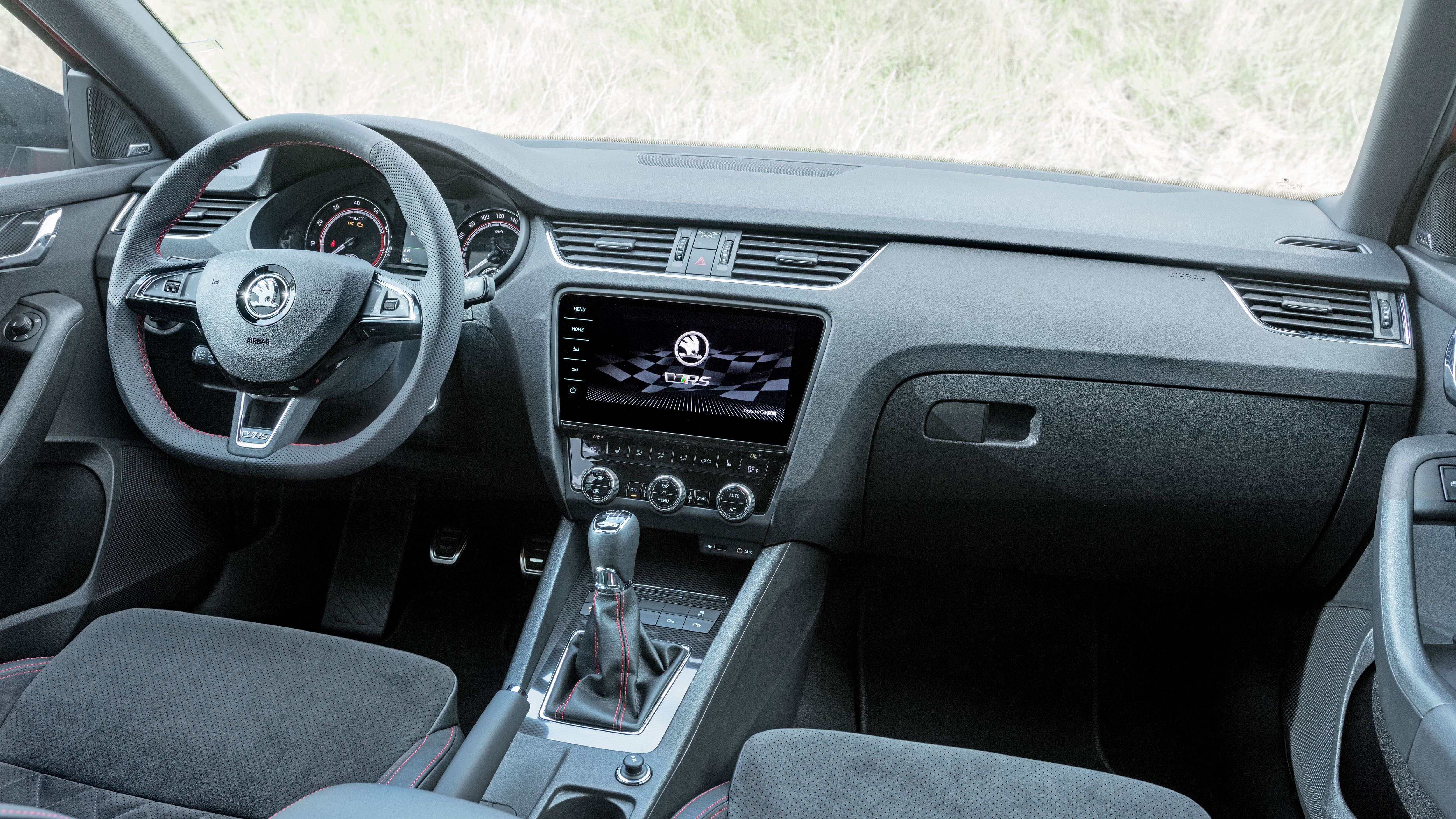
SPEC HIGHLIGHTS
- BHP
230bhp
- 0-62
6.7s
- CO2
149g/km
- Max Speed
155Mph
- Insurance
group28E
So what’s different about the facelifted Skoda Octavia vRS?
Somewhat predictably, very little. This is mostly a cosmetic refresh that also adds new infotainment and better active safety, with mechanical alterations kept to a bare minimum.
The biggest change is probably that another ten rampant Czech (or German) horses have been liberated from the 2.0-litre turbocharged petrol, taking it to a not-massive 227bhp. It’s effectively the old vRS230 range-topper, with the trick VAQ LSD (from the Volkswagen Golf GTI Performance Pack) taken out. Skoda’s saving that for the vRS245, which is also set to get the new seven-speed DSG. For now, petrol and diesel (also a 2.0-litre with 181bhp - same as the old car) Octavias get unchanged six-speed manual and DSG transmissions. All-wheel drive for diesel and DSG cars remains an option.
The vRS rides 15mm lower than a standard Octavia, and like all facelift cars, its rear track is 30mm wider.
How does it feel?
The same as it always has – sure-footed, but agile and fast enough to keep you reasonably entertained, even though by today’s standards you’d hardly call it powerful. We reckon 230-ish horsepower in a car of this size, weight and type is about right. Fast enough to satisfy most, but not so much that every time you go anywhere near the throttle pedal, you’re in very real danger of having your driving licence taken away and torn into tiny pieces. It’s about as quick as a Fiesta ST, but less frenetic.
Steers faithfully, if without much feel or involvement, and grips gamely. Fun, sure, but in a sensible, secure, more restrained kind of way than, say, a Golf GTI. Stable rather than playful.
Control weights are bob-on and the driving position will suit most. Minor gripes involves the DSG gearbox, which is fine on the way up, but isn’t always quick enough to give you the gear on the way down. And the kick-down switch isn’t very well defined – so even in manual mode, you often find it dropping a gear because you’ve inadvertently given it the go ahead.
Numbers, please.
The hatch does 0-62mph in 6.7secs. DSG is a tenth slower at 6.8, and diesels are, at their absolute quickest, another 0.8secs behind that. Top end, you’re looking at between 152 and 155mph for the petrols, and between 139mph and 144mph for the diesels. Peak diesel mpg is 62.8, with petrol cars doing low/mid forties.
Top Gear
Newsletter
Thank you for subscribing to our newsletter. Look out for your regular round-up of news, reviews and offers in your inbox.
Get all the latest news, reviews and exclusives, direct to your inbox.
The diesel doesn’t actually feel that much slower. You drive them differently – changing up way before the red-line because a) the power’s gone by that point and b), you don’t want to listen to the diesel chatter. Not that it’s unrefined – this is a very good engine by anyone’s standards, but diesels need a minimum of six-cylinders before you start revving them out just to listen to them.
New to petrol and diesel Octavias is a sound generator. It’s optional (good) and even when fitted, can be turned off (extra good).
Does the diesel handle differently?
Not terribly, no. Nor does the estate. Going off a petrol manual, DSG adds 20kg, diesel just 25kg and the estate 22kg. The AWD is the lardy one. It’s 105kg heavier than a manual, diesel hatch, and you can tell it has a bit more weight to it, a bit more inertia in the drivetrain. But in all, it’s really not bad. Makes up for it with masses of grip when the rain comes.
How about the new interior? That any good?
It’s a Skoda, so yes. Material quality is beyond reproach in all but a couple of places – the door-pulls and naff faux carbon – and there’s loads of space. Way more than you get in a conventional hot hatch, and the estate is downright cavernous. The new infotainment system is a 9.2incher. Looks pretty, but you lose volume and zoom control knobs, which is a pain. Don’t spec it.
Is it cheap?
Can be. A manual petrol estate – our choice – is £26,330. Add £1,390 for DSG if you like. Standard equipment is generous. LED headlights, big wheels and lots of safety acronyms. A Focus ST Estate is £200 more. Faster and more exciting to drive, but less spacious, less comfortable and (much) less nice inside.
We reckon the vRS would suit a young family really quite well. A good, fast-ish family car – where the trade-off between dynamics and practicality is made easy to stomach. A bit by-the-numbers, but what mainstream VWG car isn’t?
Featured

Trending this week
- Car Review
BMW 1 Series
- Top Gear's Top 9
Nine dreadful bits of 'homeware' made by carmakers






